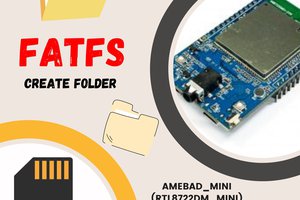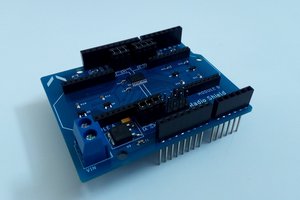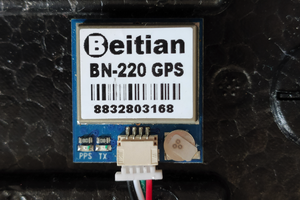This transmitter is very simple. The ATtiny2313 control the AD9850 module to generate the needed carrier frequencies. The output of the AD9850 DDS module is then fed into an SM0VPO linear RF amplifier which is followed by a 7th order Butterworth low pass filter to get rid of any harmonics.
Unfortunately my magnetic loop antenna doesn't really play nice in my dorm room and I can definitely not stick it outside of the window. The only time I can get the magloop to tune down to a reasonable SWR is when it is parallel to the window, which means that the nulls are exactly where I would ideally want my signal to go (the other three sides are surrounded by reinforced concrete).
Originally I had the AD9850 module glued to the main copper clad, but for some reason the transmission always cut out after a couple of minutes of operation. This was due to the AD9850 (may well be a counterfeit, b/c cheap eBay module) overheating once the enclosure was closed.
I stripped the DDS module of its pin headers and put thermal paste on the AD9850. Then I glued the module to he top cover of the metal enclosure, so that the enclosure can act as a heatsink for the AD9850. This effectively prevents overheating of the DDS chip and ensures continuous operation.
I have implemented two FSK modes so far. One mode is simply FSK-CW, which draws something similar to a square wave when transmitting Morse code. The time when the transmitter would be on in a standard CW transmission is denoted by a higher frequency and the off time is denoted by a lower frequency.
The length of one unit for FSK-CW is 6 seconds.
The second mode I have implemented is CASTLE10. It is also an FSK mode that transmits the call sign in Morse code, but dits and dahs use different frequencies as well as sequential elements being frequency shifted. This ensures that the transmitted characters can be told apart as the start of a new character will always be closest to the quoted carrier frequency. More information on this mode can be found on Murray Greenman's web page.
As denoted by the name CASTLE10, the length of one unit is 10 seconds in this mode.
 Elia
Elia
 Daphne
Daphne
 Rand Druid
Rand Druid
 Jan Gromeš
Jan Gromeš
 Radu Pascal
Radu Pascal